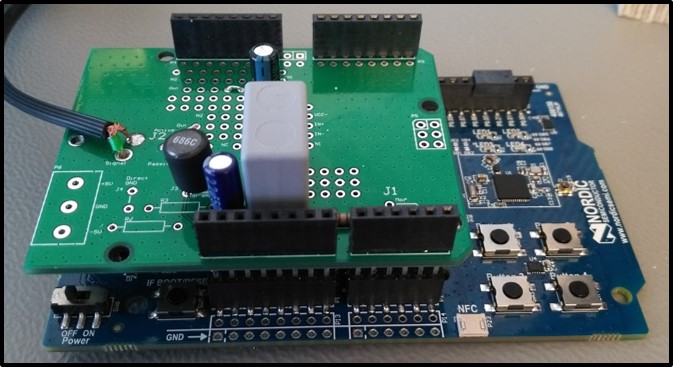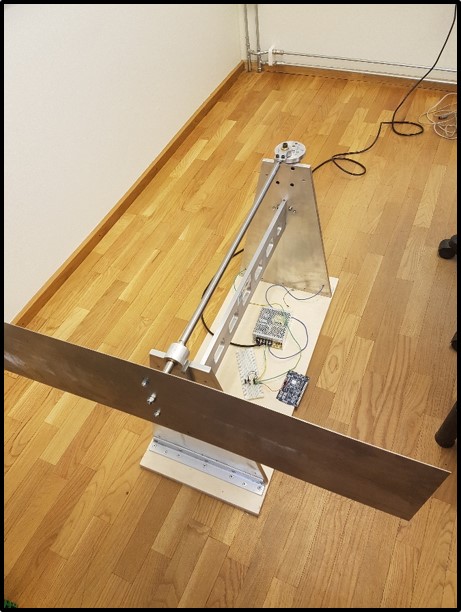The Earthquake Machine
This is a brief overview of our bachelor's project results. The bachelor's project is given by Nordic Semiconductor for students at NTNU. Our goal was to induce resonance in objects by making some sort of device which could be controlled with BLE.
All code, schematics and documentation can be found in this Github Repository. This is our first major programming project. If you're interested in knowing more about the project, or have constructive criticism of the code, please email me at [email protected].
The Earthquake Machine consists of two contraptions, the Resonator made by André Nicolaysen and Stig Kvannli Olsen, and the Lakseflakseren (Salmon-flopper) made by Martin Henriksen Dahl.
The Resonator

The Resonator consists of the Sine-Wave Generation Device (SWD) and the Vibration Measurement Device (VMD). There is also a need for an amplifier to drive the tactile transducer. The tactile transducer is a speaker made for making vibrations instead of sound.
To induce resonance, you have to induce vibrations at a specific frequency. To generate vibrations at a certain frequency we need to supply the tactile transducer with a sine-wave. The sine-wave is generated using the nRF52s on-board PWM module and a band-pass filter. The sine-wave frequency can be controlled through a physical website (https://andreln.github.io/) where you can connect to the device and set the wanted frequency.

To measure vibrations we've used the MPU9250. This Inertial Measurement Unit (IMU) is integrated into a circuit board of our own design. The VMD has two different modes that can be controlled and set on the same physical website. It can be put in Real-Time Mode (RTM) where it notifies the connected device ever 15ms with a new accelerometer value or it can be set to Take Measurment Mode (TMM). In TMM it takes a measurement sample every 500μS, after taking 2048 samples it calculates the vibration frequency and notifies the connected device.

A simple way to find the resonance frequency or one of the harmonic resonance frequencies is to hit the object with a hammer to induce vibrations. As the resonance frequency is the frequency that needs the least amount of energy, the object will linger on the resonance frequency before slowly fading. This is measurable with the VMD.
To visualize the resonance phenomenon we spread regular table salt on a steel plate. By sweeping the frequency spectrum we can clearly see when we hit a resonance frequency. By doing this we also find the harmonic resonance frequencies.

Lakseflakseren
The idea behind LakseFlakseren was to induce standing waves in a steel plate for a very visual and audible representation of resonant frequencies. It features a powerful geared down DC motor, and a wheel with an adjustable radius. The amplitude can be varied by loosening the screw and setting it to the desired length. This in turn induces fluctuations in the plate and then the plate will fluctuate. It got its iconic name during the development, as the fluctuations induced into the plate would in turn make the plate move in a fashion similar to the maneuver a stranded salmon would try in order get back into water.

It is controlled wirelessly through BLE using a dedicated Android Application (compatible with both of the machines) and an nRF52 DK.
Here is a video of the Earthquake Machine in action: https://www.youtube.com/watch?v=vrj-TwCS8rU&feature=youtu.be
It will also be available on the Nordic's Facebook page, please head over and hit the like button.
Thank you for reading.


